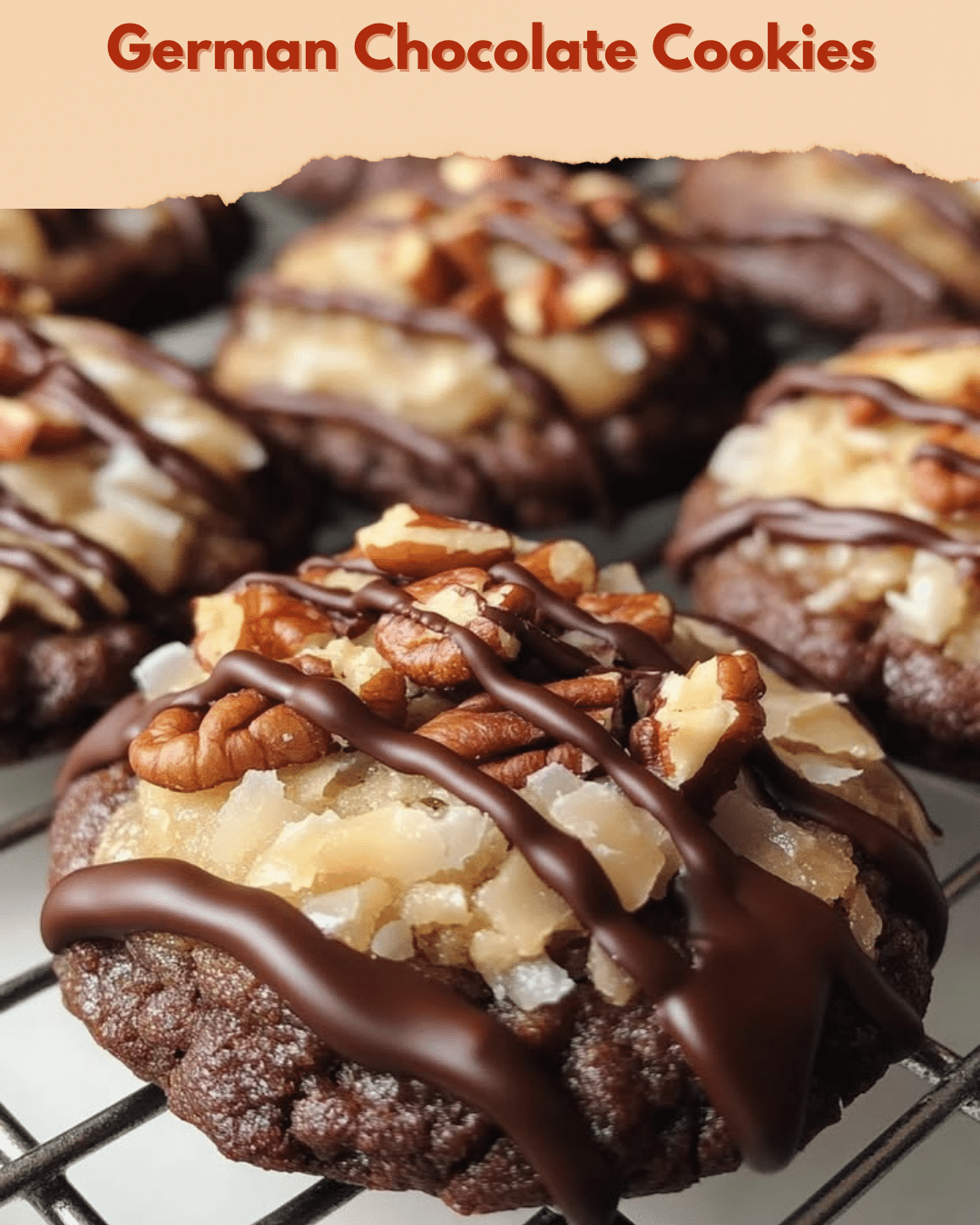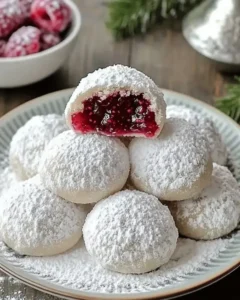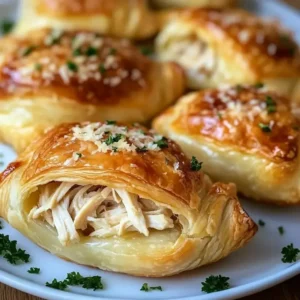**German Chocolate Cookies: The Ultimate Indulgent Treat**
The rich and decadent flavor of German Chocolate Cookies will transport you to chocolate paradise. These cookies are inspired by the classic German chocolate cake, combining dark chocolate, coconut, and pecans to create a taste that is both familiar and extraordinary. With every bite, you’ll enjoy the perfect blend of chewy, crispy, and gooey textures, all wrapped up in a sweet, nutty package. Perfect for indulging in a chocolate craving or impressing guests at a gathering, these cookies promise to be a hit.
Baking these German Chocolate Cookies fills your kitchen with an irresistible, comforting aroma that sets the stage for a delightful experience. Imagine enjoying these tasty treats while sharing laughter and good company. Whether you’re a novice or a seasoned baker, this recipe is simple to follow, without requiring any fancy equipment. Gather your ingredients, preheat your oven, and let the magic begin!
Quick Recipe Highlights
- Flavor Profile: A delightful mix of rich chocolate, gooey caramel, and nutty coconut flavors.
- Texture: These cookies offer a satisfying combination of chewy centers with crispy edges, and a speckling of crunchy pecans.
- Aroma: Breathe in the intoxicating scent of warm chocolate, toasted coconut, and hearty nuts wafting through the air.
- Visual Appeal: The golden-brown tops are dotted with pecans and flecks of coconut, inviting you to take a bite.
- Skill Level Needed: Perfect for beginners and experienced bakers alike, as the steps are straightforward and equipment minimal.
- Special Equipment: All you need are your standard cookie sheets, mixing bowls, and an electric mixer for ease.
Recipe Overview
- Difficulty Level: This easy-level recipe requires no advanced skills, making it accessible for bakers of all levels to enjoy.
- Category: These cookies fall under the dessert category, ideal for sweet snacking or as a delightful end to meals.
- Cuisine: While these cookies have roots in American innovation inspired by German baking, they represent a global fusion.
- Cost: The ingredients are reasonably priced and readily available, making this a cost-effective bake without skimping on flavor.
- Season: Enjoy these cookies year-round, but especially in cooler months when comforting sweets are most welcome.
- Occasion: Perfect for holiday gatherings, potlucks, or any time you want to share some sweet delight with loved ones.
Why You’ll Love This Recipe
The taste of these German Chocolate Cookies is second to none, with a chocolatey richness that isn’t overwhelming. The texture is perfectly balanced, with chewy centers contrasted by crisp edges and crunchy pecan bits. You’ll be hard-pressed not to grab a second or third one.
Convenience is another major benefit of this recipe. With straightforward steps and easily manageable cooking times, these cookies are quick to whip up. The recipe is forgiving, so it suits those pressed for time or new to baking.
The nutritional profile isn’t heavy, so you can enjoy these cookies without the guilt. The pecans and coconut add a slight health benefit, providing a dose of beneficial fats and fiber.
These cookies bring a social and entertaining value to any event. Their familiar yet distinct taste delights guests and makes them perfect for sharing. They offer a great conversation starter at parties, highlighting a twist on classic flavors.
Cost-effectiveness is key. The ingredient list is simple, without unnecessary or extravagant components. This makes the cookies an affordable treat that won’t strain your wallet while providing top-tier satisfaction for your taste buds.
Historical Background and Cultural Significance
German Chocolate Cookies are inspired by the famous German chocolate cake, which, interestingly, hails from America rather than Germany. The cake was named after Samuel German, an American who created a type of dark baking chocolate for the Baker’s Chocolate Company in the mid-1800s.
While the cake became wildly popular in the U.S., the flavors of chocolate, coconut, and pecans drew from influences much broader than a straightforward German origin story. The fusion creates a taste profile enjoyed across many cultures, contributing to the cookie’s universal appeal.
Over the years, variations on the classic cake emerged, including these cookies, demonstrating the versatility and adaptability of these cherished flavors. Each variation holds the core elements but tailors them to diverse tastes and contexts.
Regional variations of this cookie recipe can be found throughout the world, each tweaking the core components slightly to reflect local tastes and ingredient availability. From other nut blends to the inclusion of different chocolates, these adaptations keep the original delightful yet ever-evolving.
Ingredient Deep Dive
The key to a great German Chocolate Cookie lies in high-quality cocoa. This ingredient roots back to ancient Mesoamerican civilizations, where cacao was treasured for its rich flavor and considered a luxury. Cocoa powder delivers the bold chocolate taste critical to these cookies, offering some antioxidants for a slight health addition.
Coconut brings the signature chewy texture and natural sweetness. Historically, coconut has been used in baking for centuries, valued for its versatility. Choosing quality shredded coconut ensures your cookies maintain moisture and have that distinct flavor punch.
Pecans, native to North America, provide a lovely crunch and buttery flavor. This nut is packed with vitamins and minerals, adding health benefits. Select fresh, plump pecans for the best results, stored in a cool, dry place to preserve their freshness.
Each of these ingredients plays a crucial role in the recipe, offering distinct tastes and textures that come together to create something exceptional. Together, they showcase a harmony that celebrates the rich history and diversity intertwined in the culinary experience.
Substitutions are possible if needed – walnuts can replace pecans, while almond meal can stand in for coconut for those seeking different flavor profiles. These flexible adjustments allow the cookies to cater to dietary preferences without losing the signature experience.
Common Mistakes to Avoid
- Overbaking: To avoid dry cookies, stick to the recommended baking time and start checking two minutes early if your oven runs hot.
- Measurement Errors: Accurate measurement of dry ingredients is critical. Use the spoon and level method for flour to prevent denser cookies.
- Ingredient Temperature: Use room temperature butter and eggs to ensure better mixing and texture.
- Ingredient Substitution: Be cautious when substituting ingredients as it can alter texture. For example, using low-fat butter can affect the final cookies.
- Mixing Technique: Overmixing the dough can lead to tough cookies. Mix until ingredients are just combined.
- Baking Sheet Choice: Non-stick or lined sheets will prevent sticking issues. Avoid dark pans, which can cook the cookies too quickly.
- Cooling Time: Let cookies cool on the baking sheet for adequate setting as moving too early can cause breakage.
- Storing Incorrectly: Ensure cookies are completely cooled before storing in airtight containers to maintain freshness.
- Ingredient Freshness: Check the freshness of your baking soda for the right lift in your cookies.
Essential Techniques
The creaming method is vital in achieving the right texture for these cookies. Properly creaming butter and sugar creates air pockets that are essential for leavening. Mix until light and fluffy, which usually takes about 2-3 minutes.
Knowing when to stop mixing is just as important. Avoid overworking the flour as it develops gluten, ending in tough cookies. Mix just until ingredients are incorporated and no longer.
Baking consistency is key – use leveled cookie dough scoops to ensure even baking. This guarantees each cookie is uniform in size and shape, facilitating equal baking times across the sheet.
Temperature control during cooling is essential. Allow cookies to set on the baking sheet to prevent breakage, and use a cooling rack to complete the process, avoiding sogginess.
Pro Tips for Perfect German Chocolate Cookies
Chilling the dough for at least an hour ensures that the cookies hold their shape and allows the flavors to meld. It’s a simple step, but it makes a noticeable difference in texture and taste.
Use a high-quality baking chocolate for melting. This boost in chocolate flavor enhances every bite, amplifying the richness you’re aiming for in the cookie.
Adding a sprinkle of flaked sea salt immediately post-bake elevates the cookie, providing a complementary contrast to sweet elements and enriching the overall flavor profile.
Experiment with browning a portion of your butter. A nutty browned butter enhances the complexity and depth in flavor, subtly transforming the cookie base.
Test and adjust dough moisture – if too dry, add a few teaspoons of milk. This flexibility ensures you get the right dough consistency, resulting in the perfect chewiness.
Using parchment or a silicone mat will create an ideal surface for baking, promoting even heat distribution and making clean-up a breeze.
Variations and Adaptations
Regional variations abound. Southern-inspired versions might incorporate chopped pralines in place of pecans, resulting in an even sweeter treat, reflective of warmer climate adaptations.
For seasonal twists, consider swapping out vanilla extract with a pumpkin-spice blend in fall or adding candied ginger during winter. These subtle changes tweak the basic recipe to suit the season’s essence.
To create a more dietary-friendly version, explore gluten-free flour blends or non-dairy butter alternatives, ensuring everyone can enjoy these delicious cookies regardless of dietary restriction.
Flavor variations can be easily incorporated with the addition of espresso powder or swapping semi-sweet chocolate for white chocolate for a more delicate, milder taste.
Texture is also adjustable – indulge in thicker cookie formats by scooping larger portions or alternatively, thinner by flattening slightly before baking.
Presentation can also be experimented with by drizzling chocolate ganache or caramel over baked cookies, offering a visually stunning finishing touch.
Serving and Presentation Guide
For optimal presentation, arrange your cookies on a cake stand with varying tiers, showcasing their beautiful texture and color. A garnishing of fresh mint leaves adds a pop of color and freshness, elevating visual allure.
Traditional accompaniments include a glass of cold milk or hot coffee, adding tradition and comforting familiarity to your servings, enhancing the chocolate and coconut flavors.
In modern settings, consider accompanying these cookies with fruit-infused water or light sorbet, refreshing palates and balancing sweetness.
The best serving temperature is slightly warm, as the chocolate remains gooey, further enhancing the indulgent experience. Placing cookies in a 350°F oven for 1-2 minutes can ensure this ideal state.
Portion control is simple when using standard scoops, making it easy to create perfectly sized 2-inch cookies, ensuring that each guest receives a consistent and satisfying portion.
Wine and Beverage Pairing
For a sophisticated pairing, consider a robust red wine such as Zinfandel or a late harvest dessert wine, both enhancing chocolate’s richness and balancing sweetness with depth.
Non-alcoholic alternatives are plentiful – a rich dark hot chocolate or black tea can beautifully complement the cookies, enhancing the cocoa flavors without overpowering the palate.
For tea lovers, pairing these cookies with a bold English breakfast tea offers a delightful balance, framing the tropical sweetness beautifully with a touch of acidity.
As should always be considered, drink temperatures are crucial – serve wines slightly chilled and teas hot to fully realize the complementary flavors.
Offering smaller tasting portions encourages sampling, allowing guests to experience and appreciate each nuance be it through wines or tea complements.
Storage and Shelf Life
Store these cookies in an airtight container to retain their freshness, stacking them between layers of parchment paper to prevent sticking.
Keep them at room temperature in a cool, dry place for up to one week. For extended storage, freeze them where they can last up to three months.
Ensure containers are of good quality, airtight, and lined to maintain cookies’ integrity without allowing external odors to alter their taste.
Watch for signs of spoilage such as staleness or blooming (white cacao separation), to ensure they remain in peak condition for enjoyment.
To reheat, pre-warm them in an oven for 2-3 minutes, reviving their freshly baked texture and fragrance which microwaves can often disrupt.
Freezing can be done both pre and post-bake. Raw dough should be portioned and then frozen, while baked cookies can be bagged before freezing.
Make Ahead Strategies
Prepare dough in advance by carefully sectioning it into cookie-sized scoops before freezing. This ensures quick and effortless baking as you can move portions straight into the oven.
During busy periods, freeze pre-baked cookies and simply reheat for warmth pre-serving, maintaining both taste and texture while saving on-the-day prep.
Understand quality impact with make-ahead cooking; dough flavor deepens beautifully over refrigeration, enhancing the end result through gradual ingredient melding.
Pre-prep tips include having parchment and trays ready to minimize downtime during baking and using quality freezer bags to store dough without flavor degradation.
Reheating guidelines are simple: low oven heat gently revives cookies, retaining chewiness and avoiding any hardening microwave could cause.
Introduce fresh elements like coconut or pecans post-reheating for a just-baked quality, ensuring taste and crunch are optimized upon serving.
Scaling Instructions
Halve the recipe easily by dividing all ingredients by two, ensuring you maintain original proportions for each component to keep the flavor balance.
For doubling, your primary consideration should be adjusting cooking batch sizes rather than crowding baking sheets, which leads to temperature inconsistency.
Larger-scale baking may require additional cooling racks and lined trays to handle increased quantities efficiently without compromising on baking consistency.
Timing needs minor adjustments, primarily in dough preparation and baking times if working with doubled batches. Monitor baking closely as oven loads impact heat management.
Storage considerations for larger quantities involve layering cookies in airtight containers to avoid crushing, maintaining them at optimum quality.
Equipment such as stand mixers can speed bulk processes, preventing fatigue while maintaining uniform dough consistency through increased load handling capacity.
Nutritional Deep Dive
The macro breakdown ensures a balanced treat, with fats primarily from nutritious sources such as nuts and butter providing buttery smoothness.
Micronutrient analysis shows health contributions from pecans (rich in magnesium and antioxidants) and coconut (providing dietary fiber benefits).
Enjoy these cookies within moderation; their combination of sweetness balanced with fats ensures satisfaction while being mindful of portion sizes.
Dietary considerations spotlight the possibility of adapting for specific needs (like gluten-free or reduced sugar versions) without losing the charm of the cookie.
Proper portion analysis shows these cookies pack an indulgent flavor punch in a reasonably small bite, easing guilt while savoring each element.
Useful weight management tips include enjoying these cookies mindfully alongside protein-rich items to better integrate and stabilize blood sugars post consumption.
Dietary Adaptations
For a gluten-free option, substitute all-purpose flour with a gluten-free blend that contains xantham gum for structure, ensuring the cookies maintain their original form.
Dairy-free alternatives are simple with the use of plant-based butter and chocolate variations. Coconut oil imparts additional flavor while maintaining texture.
Vegan adaptations involve replacing eggs with blended banana or chia seeds soaked in water; these options retain moisture and act as binding agents.
For low-carb inspirational cooking, substitute standard flour with almond meal and unsweetened cocoa, adjusting sweeteners to monk fruit or similar for flavor retention.
Keto versions align similarly with low-carb adaptations, focusing on nut flours and sugar substitutes while enriching flavors with vanilla or almond extracts.
Paleo adjustments require grain-free flours like almond or coconut along with honey or maple syrup sweetening, merging modern dietary patterns with traditional flavors.
Low-FODMAP adjustments involve reducing higher FODMAP ingredients, swapping out to alternative flours and lactose-free chocolate brands for accessible enjoyment.
Troubleshooting Guide
Faced with texture issues such as excessive spreading? Ensure dough is adequately chilled before baking, strengthening it to hold its shape.
For flavor balance dilemmas, ensure salt and extract ratios are correct, highlighting chocolate’s lushness while balancing potential sweetness.
Temperature problems often arise from oven inconsistencies; using an oven thermometer ensures you achieve and maintain the right environment.
Equipment challenges can be met by using silicone mats for non-stick surfaces, reducing the chance of undercooked centers or stuck bottoms.
Ingredient substitutions should be thoughtfully considered – for example, keeping moisture balances if swapping sugars or flours to avoid drying out.
Timing concerns often involve batch overloading; bake in smaller portions to sustain even cooking without time-spilling or risking flavor degradation.
Recipe Success Stories
Community feedback sings high praises of the cookie’s approachable nature, with more experienced bakers sharing tweaks to integrate personal touches.
Variation success stories often highlight examples like raspberry coconut additions or toffee pecan swaps, unlocking creative spins both exotic and nostalgic.
Adaptation stories abound, where readers embrace dietary needs with almond butter replacements or cinnamon infusions, broadening the recipe’s inclusivity.
Reader suggestions help others master technique or innovation, such as doubling extract for emboldened flavor or sugar swaps to cater to preferences.
Photography tips from the cooking community advise showcasing cookie layers or enlisting decorative cooling racks to boost visual storytelling as they emerge from the oven.
Frequently Asked Questions
Absolutely! Shape the dough into balls and chill them on a baking sheet for a couple of hours prior to transferring to a freezer-safe bag. This method maintains freshness for up to three months.
What’s the best way to store leftover cookies?
Keep baked cookies stored in an airtight container with parchment between layers to safeguard them from moisture, ensuring they stay fresh for a week at room temperature.
Can I make these cookies without a mixer?
Yes! While an electric mixer makes the creaming process easier, mixing by hand with a robust, sturdy spoon works fine, just ensure you thoroughly blend ingredients for consistency.
Are there variations for those with nut allergies?
Yes. Omitting pecans and substituting with rolled oats or seed blends offer nut-free textures while ensuring those with allergies can partake in deliciousness.
Can I add other flavors to the dough?
Certainly! Additions like orange zest or espresso powder amplify complexity, ensuring varied flavor profiles without overpowering the classic taste.
What alterations reduce sugar content?
Swap traditional sugars for substitutes like stevia, monk fruit, or reduced sugar blends, maintaining sweetness while lowering overall sugar levels.
How can I get my cookies chewier?
For chewier cookies, use brown sugar which provides moisture, and slightly underbake to ensure cookies set deliciously after resting.
How do I prevent cracking?
Cracking often occurs due to overly firm dough; ensure dough is well-blended and chilled, but not excessively so, enabling movement without splitting.
What size scoop should I use?
A two-tablespoon sized scoop offers consistent, satisfying bite-sized cookies, ensuring they bake evenly and yield uniform results.
Do I need to brown the butter?
Browning enhances nutty depth, though it’s not required. It’s a pleasant optional step for those desiring added layers of flavor without complicating the recipe.
What containers are best for freezing cookies?
Durable, freezer-safe bags or airtight containers eliminate freezer burn and help maintain texture in both baked and pre-baked states, ensuring longevity and quality.
Why are my cookies spreading too much?
Overly soft dough or high oven heat leads to excess spread. Ensure chilled dough and properly regulated temperatures combat shapeless cookies.
Additional Resources
Explore related recipes for more indulgent bakes, such as Chocolate Chunk Brownies, Coconut Macaroons, and Pecan Bars, all contributing similar flavor profiles.
Technique guides dive deeper into baking fundamentals including creaming butter, browning butter, or achieving perfect cookie form through chilling and shaping.
Ingredient info elucidates on chocolate varieties, coconut processing methods, or pecan origins, adding depth and insight to the foundation of these cookies.
Equipment recommendations ease cookie aspirations with the help of digital scales, heavy-duty mixers, or silicon mats, ensuring you have all necessary tools to flourish.
Seasonal variations guide through creative twists, capturing holiday spirit or summer freshness with ingredient swaps or additional enhancements to suit every occasion.
Print
German Chocolate Cookies
Description
Delicious chocolate cookies with a coconut and pecan topping, inspired by the classic German chocolate cake.
Ingredients
For the Crust:
- 1 cup flour
- 1/2 cup cocoa powder
- 1/2 teaspoon baking soda
- 1/4 teaspoon salt
- 1/2 cup butter, softened
- 1/2 cup sugar
- 1/2 cup packed brown sugar
- 1 egg
- 1 teaspoon vanilla extract
- 1/2 cup shredded coconut
- 1/2 cup chopped pecans
- 1/4 cup evaporated milk
- 1/4 cup mini chocolate chips
Instructions
1. Prepare the Crust:
- Preheat the oven to 350°F (175°C) and line a baking sheet with parchment paper.
- In a medium bowl, whisk together flour, cocoa powder, baking soda, and salt.
- In a large bowl, cream together butter, sugar, and brown sugar until light and fluffy, then beat in egg and vanilla extract.
- Gradually add dry ingredients to the wet ingredients, mixing until combined.
- Fold in shredded coconut, chopped pecans, and mini chocolate chips.
- Drop dough by rounded tablespoons onto the prepared baking sheet.
- Bake for 10-12 minutes or until cookies are set.
- Cool on the baking sheet for 5 minutes, then transfer to a wire rack to cool completely.
Notes
You can customize the seasonings to taste.





